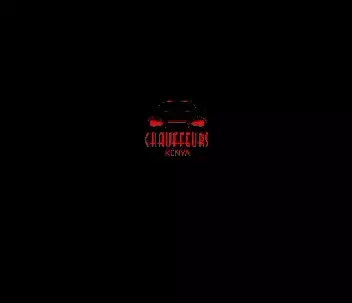DISCOVER THE BEAUTY OF THE WESTERN CIRCUIT
Experience the sites like you never have before
In the Luo language it means “the sunken village”, the “Simi Nyaima” is a wonderful little volcanic lake in the Karachuonyo area of western Kenya, not far from Lake Victoria in Homabay County of the Nyanza region.
Here, a few kilometers away, lies the bay of Kendu, already known for its ancient origins and prehistoric sites not yet exploited that make it a potential tourist destination of worldwide interest.
Simi Nyaima, on the other hand, is a centre of tourism with the possibility of development also in the spa sector.
It is believed that the water of the lake, very saline and sulphurous, has important curative qualities.
Its smell can be felt up to forty kilometres away and the salt extracted from the basin is sold for various uses.
Lake Simbi Nyaima is also a seasonal landing place for flamingos during their migration from other places such as Lake Nakuru, Lake Bogoria, Lake Natron and other lakes in the Rift Valley.
Geologists date the formation of the volcano’s reservoir to around the 15th century, although a strong earthquake, perhaps in 1860, with a consequent eruption of lava, should have modified the area.
But for the local community the origins are much older, and inevitably have created many legends.
It is said that once upon a time there was a large village, Simbi, on the shore of the lake, which lived on fishing and shared serenity. The land was fertile and the water fresh.
But, as often happens, wealth brought greed and rivalry and the community was distinguished by greed and arrogance.
Then when the young villagers, in the midst of a feast of plenty, refused to care for and take care of a malnourished old woman who wandered from hut to hut asking for food, a curse fell on the village in the form of a violent storm that plunged the village into the lake and drove the other tribes away, who took shelter in Tanzania, where they still are and are handed down the legend of their birthplace.
Ruma National Park lies in Western Kenya, close to the shores of Lake Victoria. An island of wilderness in a sea of intense cultivation, the Park is situated in one of the most productive and populous regions in Kenya, and is one of the country’s more rewarding but less well known Parks.
A mosaic of landscapes, ranging from riverine woodland and rolling savannah to magnificent escarpments and towering cliffs, Ruma National Park promises undiscovered wildlife treasures and undisturbed peace. It is also Kenya’s last remaining sanctuary for the endangered roan antelope.
Ruma lies on the flat floor of the seasonally watered Lambwe River Valley. Bordered by the Kanyamwa Escarpment to the South-East, and by the Volcanic plugs of the Ruri Hills, to the North, the Park is a long, narrow corridor of land contained on a fist-shaped peninsular extending into Lake Victoria. The terrain is mainly rolling grassland, with tracts of open woodland thickets. The soils are largely “black cotton” clay (Oxisols).
A unique natural monument dominating an enchanting landscape, in an area little frequented by mass tourism in Kenya, but which is becoming a place of historical and scenic interest.
Kit-Mikayi is an imposing rock formation seventy meters high on the road from the town of Kisumu to the town of Bondo in western Kenya, not far from Lake Victoria.
Kit-Mikayi in the Luo language, means “First Wife Rocks” or “First Wife Rocks”.
The legend of Kit Mikayi tells that many centuries ago there was an old man named Ngeso who was in great harmony with the stones. Every day, when he woke up in the morning, he used to enter the cave inside the stone and stay there all day, forcing his wife to bring him breakfast and lunch. The old man fell passionately in love with this stone to the point that people often asked his wife where he was, and she replied disconsolately that he had gone to his first wife (Mikayi), hence the name “first wife stone” (Kit Mikayi).
A further explanation of this singular rock formation is that according to its characteristics and components, the structure represents the polygamous family of the Luo tradition that had the house of the first wife (Mikayi) built later on the right side was the house of the second wife (Nyachira), while the house of the third wife (Reru) was built on the left side of the house.
For a long time, this stone was a sacred place for the villagers as well as a place of worship and tribal initiation rites.
The locals who live around the stones are known as the “Kakello” clan.
The site is associated with sacrifices and many legends from pre-Christian times.
Kit-Mikayi today is a point of regional tourist interest.
It has also become a popular local pilgrimage site for followers of the “Legio Maria” sect who stand at the rock to pray and fast for several weeks at a time.
The rock is located in an area rich in attractions, not far from the more famous Ndere Island, known for its wildlife, birdwatching, hippos, Nile crocodiles and impalas.
Lake Victoria is adorned with numerous islands within it and one of its salient islands is Takawiri. Takawiri Island is a hypsographic island located in Lake Victoria.
Located in Mbita, Homabay County; Takawiri can be accessed from Homabay via the Mbita causeway to Rusinga Island Lodge where you can embark on a motorized boat to the island.
Tom Mboya’s mausoleum lies on family land at Kasawanga Village on the north side of the island, about 7km by the dirt road from Mbita, or roughly 5km directly across the island. The mausoleum (open most days to visitors) contains various mementoes and gifts Mboya received during his life.
READY FOR THE OUTDOOR EXCURSION OF A LIFETIME?


